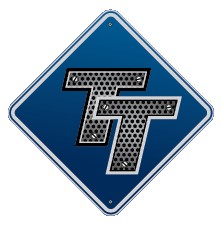A parked regeneration, or parked regen, is a crucial process for diesel trucks like Freightliners. It helps to burn off accumulated soot in the Diesel Particulate Filter (DPF), preventing clogging and maintaining engine performance. This article explains how to initiate a parked Regen On A Freightliner and discusses important considerations.
Understanding Freightliner Regen
Modern Freightliners are equipped with a DPF to reduce harmful emissions. During normal operation, the DPF passively burns off some soot. However, when soot levels reach a certain threshold, a parked regen becomes necessary. This process actively burns off the excess soot, ensuring the DPF functions correctly. Ignoring a regen request can lead to reduced engine power, increased fuel consumption, and potentially costly repairs.
Initiating a Parked Regen on a Freightliner
Most Freightliner trucks have a dedicated “Parked Regen” switch on the dashboard. Here’s how to initiate the process:
- Park Safely: Ensure the truck is parked in a safe location, away from flammable materials like grass or dry leaves. The exhaust temperature during regen can reach extremely high levels. A paved surface is ideal.
- Engage Parking Brake: Apply the parking brake firmly.
- Locate the Switch: Find the “Parked Regen” switch, usually located on the dashboard. Consult your owner’s manual if you have difficulty finding it.
- Activate the Switch: Press and hold the “Parked Regen” switch for at least 20 seconds. This will initiate the regen process.
- Observe the Process: Once started, the engine RPM will increase significantly, and the truck may vibrate. This is normal. The regen process can take anywhere from 15 minutes to an hour to complete. Do not interrupt the process unless instructed by the vehicle’s display.
Important Considerations for Freightliner Regen
- Exhaust Temperature: As mentioned earlier, the exhaust temperature during a parked regen gets extremely hot. Park away from flammable materials to prevent fires.
- Idling: While idling is sometimes necessary, prolonged idling can contribute to DPF clogging and increase the frequency of regens. If idling is unavoidable, consider increasing the engine RPM to around 800 using the cruise control, if your model allows. This can help prevent excessive soot buildup.
- Warning Lights: Pay attention to any warning lights related to the DPF. Ignoring these warnings can lead to more serious problems. If a warning light persists, consult a qualified mechanic.
Conclusion
Performing a parked regen on a Freightliner is a necessary maintenance procedure. Understanding the process and following the correct steps will ensure the DPF operates efficiently, reducing emissions and maintaining the truck’s performance. Remember to prioritize safety by parking in a suitable location away from flammable materials and always consult your owner’s manual for model-specific instructions.

